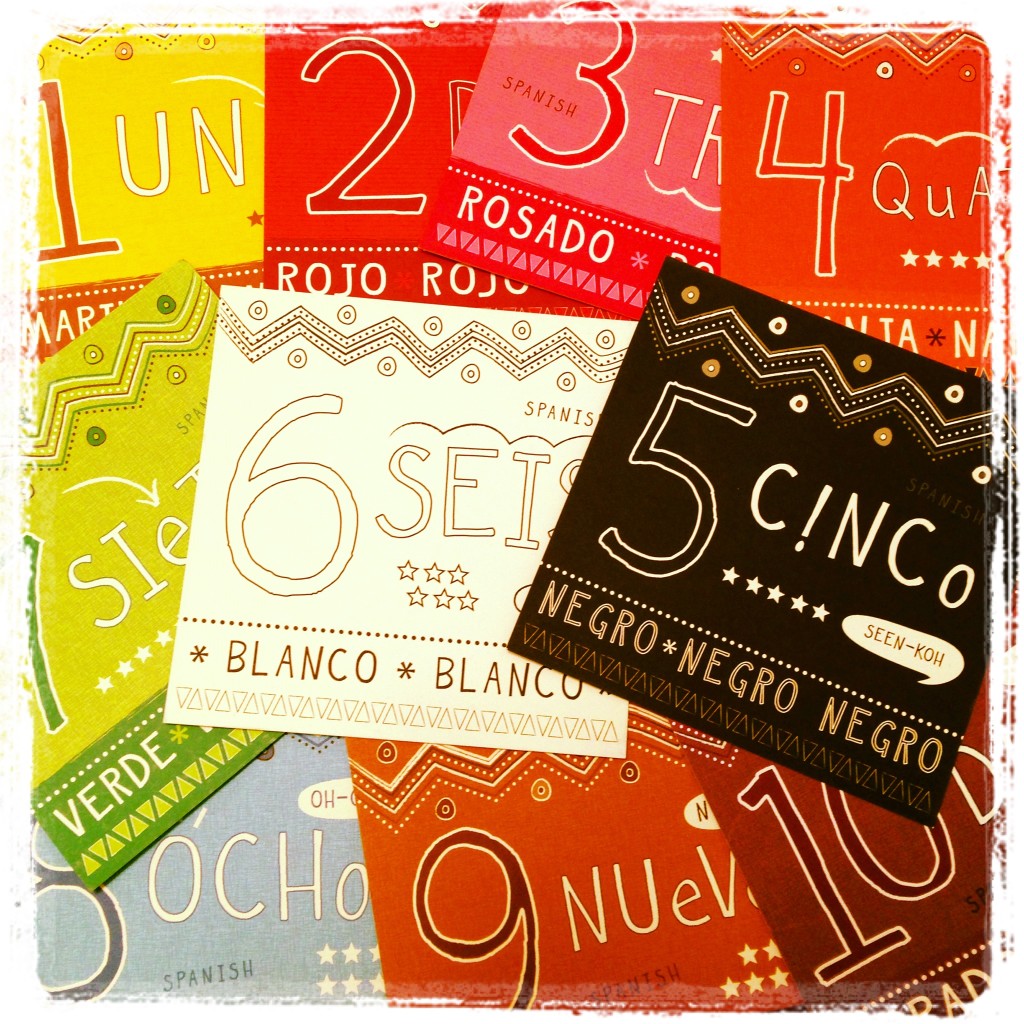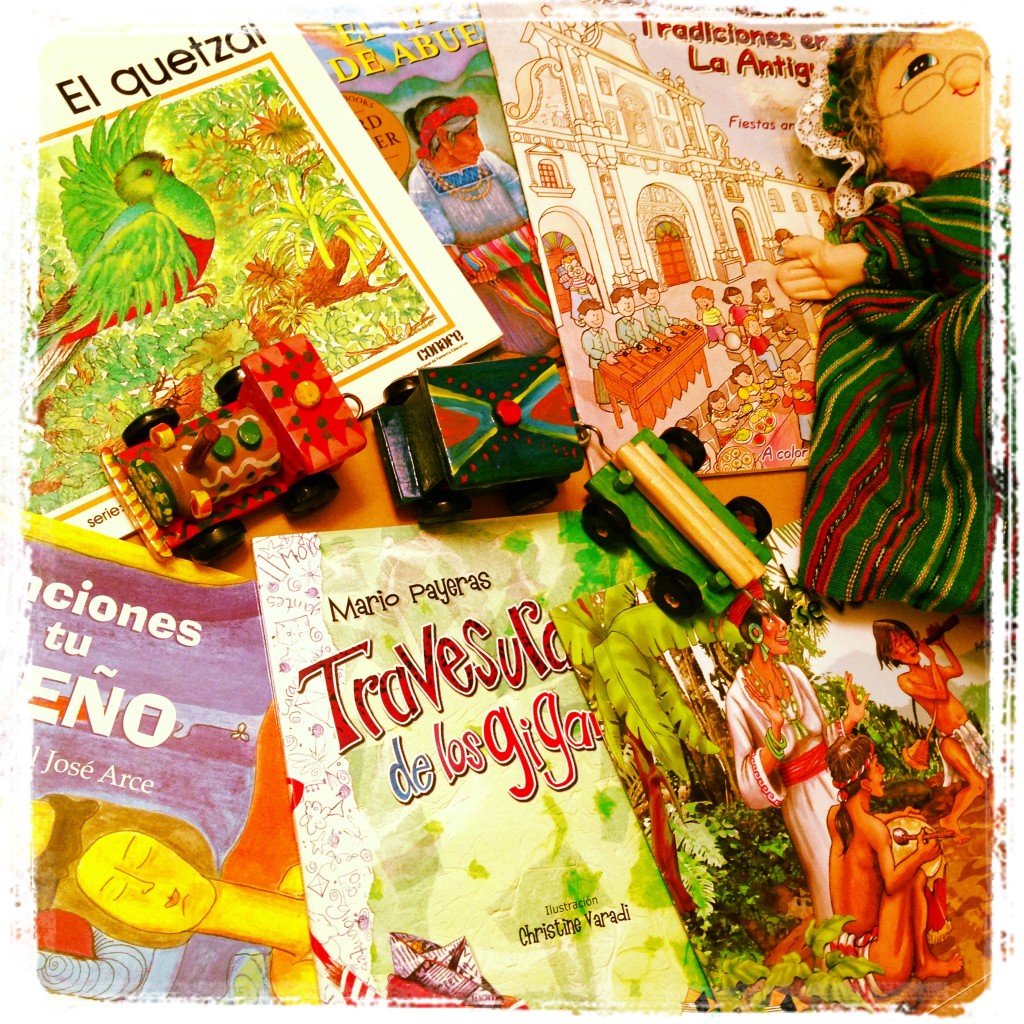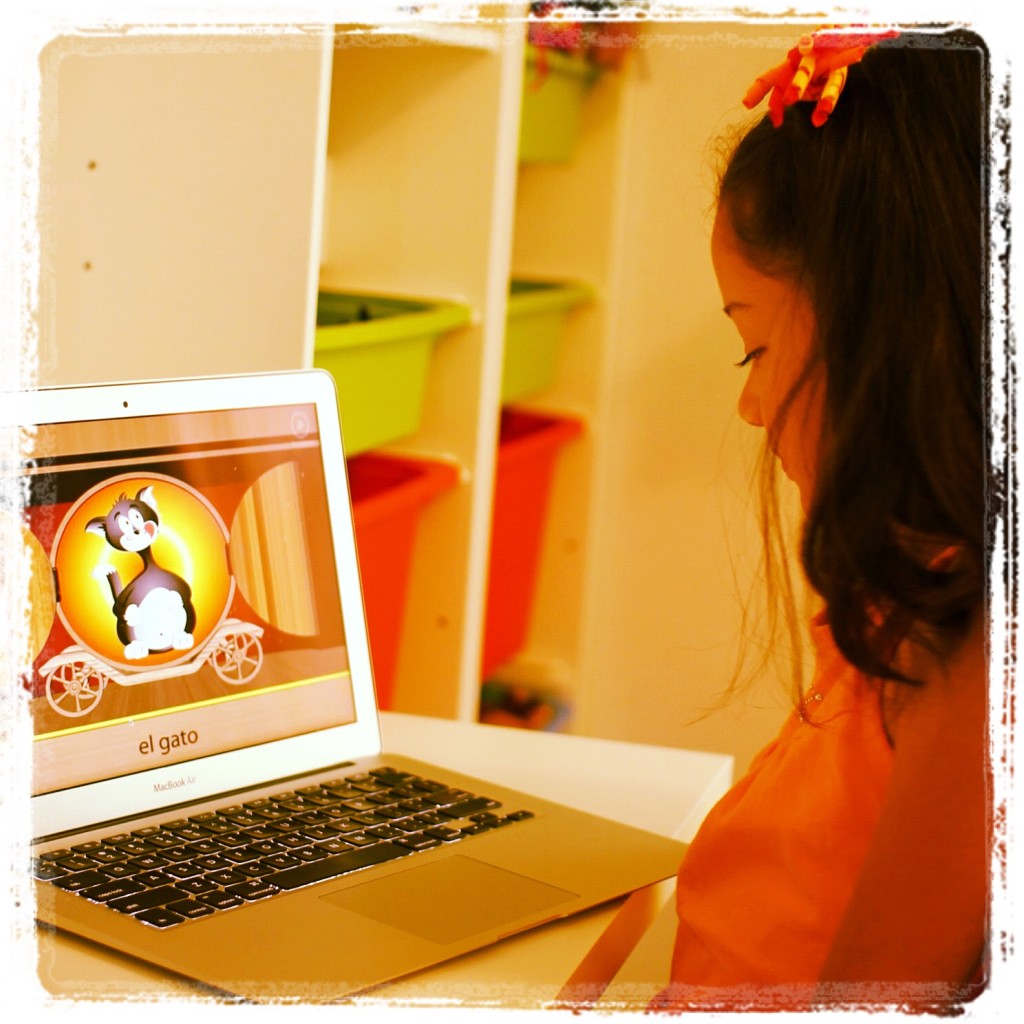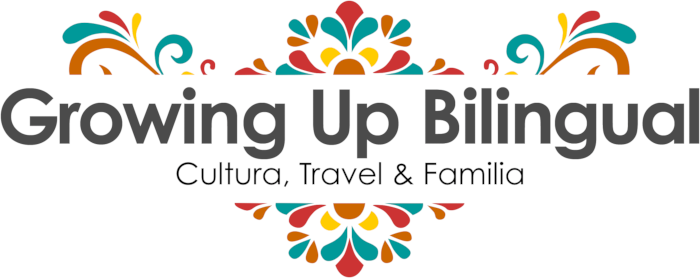I have to admit that keeping Spanish alive is harder than I thought. Even though both my husband and I speak mostly Spanish at home (I’ll admit it’s not a 100% of the time) the truth is that the amount of time my kids spend immersed in a Spanish only environment is a lot less than I had anticipated. Between school, extracurricular activities, homework and TV most of their day is spent speaking and hearing English.
This year we realized we have to do some things differently so that we can reach the goals that we have set for our bilingual family.

I want my children to be fluent in Spanish and like any other goal, this will take some planning. That is why this year we are tweaking our bilingual game plan and we came up with some things we want to add or improve to what we have been doing so far. It’s important that when you have a goal you make it clear, you put a timeline on it and you share it with your friends/family so that they can make you accountable. So I am sharing our goals with my readers and I will let you know how we did next year!
1. Have more Spanish time at home. I have to admit that we have been slacking on this one. The last few weeks we have been traveling, enjoying the holidays and the kids have been on vacation. It has been hard since we have been visiting English-speaking family and have been immersed in English speaking environments 24/7. I have come to realize that sometimes you have to plan time for Spanish activities, schedule them clearly and be very specific about the choices. This year both my husband and I are working from home so it’s harder to draw that line of speaking only Spanish at home when we are on the computer and on the phone in English all the time. To help everyone follow the plan we have set up a schedule. Kids come from school and do their homework and after that they need to do a fun activity in Spanish which can be watching a favorite program or movie, playing on the computer or reading a book.

2. Turn our home into an environment where our culture is present all the time. It’s not just about speaking your home language with your kids: your children have to hear, see, smell, taste and touch your culture and they have to have as many opportunities to do it as possible. I try to take advantage of every and any opportunity to do this:
– Music: We have a variety of CDs in Spanish in the car so that you can play music in Spanish while driving to and from karate or dance class. One of our favorites in Sing with Señor but we also like to sing traditional Latin American children’s songs. My kids really love music so we have a lot of fun doing this.
– Food: Involve my children in the kitchen and cook traditional dishes or give our favorite meals a twist by adding traditional ingredients. It’s easy to turn the kitchen and the dinner table into a learning environment and teach your children where the dishes your are cooking and eating come from, talk about the ingredients and tell family stories related to the traditional dishes or family recipes.
-Environment: We just got these awesome bilingual flash cards, they are so beautiful! So I am placing these in my daughter’s room so she can see the words in Spanish all the time. This will help her with her spelling and reading. I also want to include more things from my home country Guatemala in our house so that the kids can feel our culture present in their home. This Christmas we decorated our tree with handmade ornaments made by the Mayan people in Guatemala and I my children got toys and books from Guatemala.
-Toys and Books: My kids get toys and books that reflect their heritage. Along with the spider man costumes and books about characters from the TV my kids also have some toys and books that are either from our home country: Guatemala or that reflect their our Latino roots. This year I will make it my goal to find more toys and books that reflect our culture.

3. Connect with the Hispanic community. If you don’t have family in the US and don’t have many friends who speak Spanish, like we do, you need to be proactive and get creative. I found a Spanish story time at our local library and I am planning to start a Spanish playgroup in my area. My kids really need to feel that they are not alone in speaking Spanish and that there is a strong community and they are a part of it.
4. Schedule some formal education “time” in Spanish. I attended a full immersion school where I had a formal education in English while growing up in a Spanish speaking country. My kids are not so lucky. They are both attending public school and we have no Spanish immersion schools or bilingual schools in our area. Speaking (and listening to) Spanish is not enough, I want my kids to learn to read it and write it and to accomplish that they need to learn the correct grammar and spelling, they need to learn letter sounds, etc. We signed our children up to a Spanish class and use online resources like PetraLingua that provides online language courses for kids. I also love MommyMaestra.com because it has lesson plans and lots of printables. We are even considering moving to an area that has Spanish immersion or bilingual schools, you can find a list of bilingual schools on the Spanglishbaby.com website here.

5. Host a Spanish speaking aupair. Another great way to reinforce bilingualism at home is by hosting an au pair who speaks the target language. An au pair can provide consistent exposure to the language through daily conversations, playtime, and cultural activities, creating an immersive environment that strengthens language skills. This can be especially beneficial for families aiming for fluency in both languages, as children have the opportunity to interact with a native speaker in a natural and engaging way. Additionally, an au pair can introduce traditions, music, and storytelling from their home country, helping kids connect with the cultural aspects of the language they are learning.
6. Get support. Sometimes I think that I can do everything on my own but we all need help. Reaching your goals is always easier if you have the support of others. This year I am having a talk with my kid’s grandparents and letting them know how much it would help it they join in the effort to get the kids to talk more in Spanish. I will also become more active in online communities for parents of bilingual children like Spanglishbaby’s Playground so I can get ideas, support and advice.
The most important thing I have realized is that we have to look at what we are doing and if it’s working and set new goals or tweak the old ones periodically so that we can achieve our bilingual family’s goals.
What goals did you set for your family this year?



These are really good tips. Thank you for the post.
You set some really great goals for your family! Growing up, one of my best friends was a girl who had moved from Poland when she was six. Whenever I would go to her home, her entire family only spoke Polish in the house–and they didn’t throw a little English in there whenever she or her brother had friends over, either. I always thought that it was really great of her parents to make sure that she and her brother always knew where they came from and their culture was actively running throughout their home.
Raising your children bilingual is such a valuable opportunity.
Good for you setting such realistic goals for you and your family. Simply having your culture present 24/7 will prompt conversations and questions galore! Way to be! 🙂
Thanks Crista! It’s hard to keep the minority language and culture alive but we are doing what we can and hope that my kids will be able to read and write in Spanish when they grow up and that they pass on some of our traditions and culture down to their kids as well.
This is really an awesome list of goals and strategies so your children and family can be more bilingual. 🙂